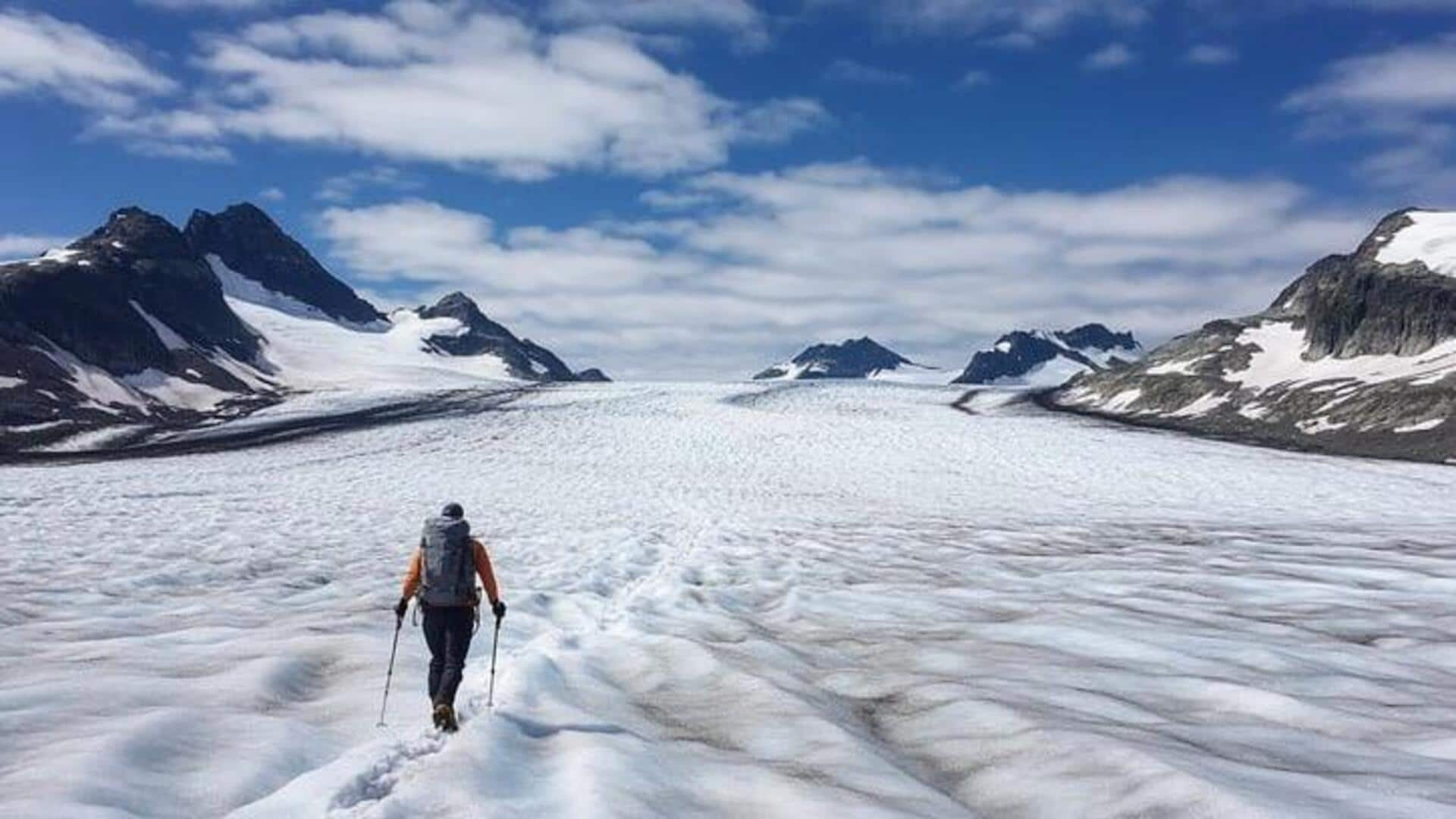
Glacier hiking 101: Gear, safety, and more
What's the story
Glacier hikes promise an exhilarating adventure for thrill-seekers eager to trek some of the most beautiful icy terrains across the globe. The hikes bring with them a whole new set of challenges, from hiking across treacherous crevasses to braving harsh weather conditions. But for the brave-hearted and well-equipped, glacier trekking can be a once-in-a-lifetime experience into nature's frozen beauty. Here's what makes glacier hikes both challenging and rewarding for intrepid travelers.
Gear
Essential gear for glacier hiking
If you're going on a glacier hike, proper gear is essential. Crampons (for traction on ice) and an ice axe (for stability and self-arrest in case you fall) are mandatory. Layered clothing will help maintain body temperature in changing conditions. A helmet will protect you from falling ice/rocks, while harnesses and ropes are needed to stay safe while crossing crevasses.
Tip
Navigating crevasses safely
Crevasses are one of the biggest risks of glacier hikes. To avoid falling into them, it's best to travel in groups roped together (to prevent falling into hidden gaps). Sticking poles or probes helps in identifying weak snow bridges over crevasses. Always stick to established routes, if possible, and stay alert for the changing ice conditions that may reshape the landscape unpredictably.
Challenge
Weather challenges on glaciers
Weather on glaciers can change quickly, leading to problems like whiteouts or sudden storms. Hikers should prepare with waterproof gear and be aware of weather patterns in their region. One must check forecasts before heading out, and have a plan if bad weather occurs during a hike.
Requirement
Physical fitness requirements
Since glacier hiking is strenuous—covering long distances over uneven terrain at high altitudes—high levels of physical fitness are a must. Training beforehand with cardiovascular exercises such as running or cycling helps build the endurance required for these treks, while strength training conditions the muscles used during climbing sections found along many routes.